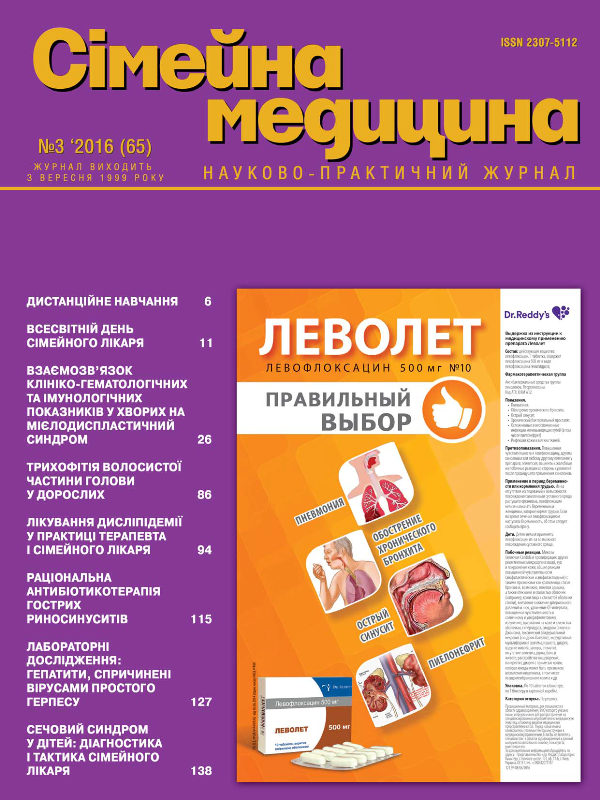The relationship of clinical and haematological and immune parameters in patients with mielodisplastic syndrome
##plugins.themes.bootstrap3.article.main##
Abstract
The Objective: to determine the relationship between changes in hema tology clinical condition and immunological parameters in patients with myelodysplastic syndrome (MDS).
Materials and methods. There were examined 36 patients diagnosed with MDS . All patients were divided into groups depending on the response to treatment : Group 1 – patients before treatment; Group 2 – patients who have responded positively to therapy and became transfusion independent ( remission , partial remission and great hematological response ); Group 3 – patients, gave only a small hematology response and were transfusion dependent, as well as those that have not responded to treatment. The control group included 30 healthy individuals with no bad habits that can affect your blood.
Results. The comparative analysis of clinical and hematological data and immunological study of peripheral blood cells and bone marrow in the initial period and in achieving clinical and hematologic compensation in MDS patients with refractory anemia with excess blasts (RANB). Established reduce the number of myeloid progenitor cells in the bone marrow origin in achieving clinical and hematologic compensation that can be considered as one of the criteria prognosis.
Conclusion. Results of the study show that with a positive response to treatment of patients with MDS improved clinical and hematological parameters, patients achieved transfusion independence while they watch reducing hematopoietic cells in bone marrow. The dynamics of immunological parameters can be used in evaluating the effectiveness of treatment and prognosis of MDS.
##plugins.themes.bootstrap3.article.details##

This work is licensed under a Creative Commons Attribution 4.0 International License.
Authors retain the copyright and grant the journal the first publication of original scientific articles under the Creative Commons Attribution 4.0 International License, which allows others to distribute work with acknowledgment of authorship and first publication in this journal.
References
Becha M., Braham Jmili N. 2015. Myelodysplastic syndromes: patho physiology, clinical and biological fea tures. Ann. Biol. Clin. 73; 6: 643–656.
Warlick E.D., Milleris Н. 2012. Myelodysplastic syndromes: the role of the immunesystem in pathogenesis. Br. J. Hematologica. 91: 425–430.
Wosniak J., KopeæSzlezak J. 2004. CKit receptor (CD117) expression on myeloblasts and white blood cell counts in acute myeloid leukemia. Cytometry B. Clin. Cytom. 58; 1: 9–16.
Hans C.P., Finn W.G., Singleton T.P. et al. 2002. Usefulness of antiCD117 in the flow cytometric analysis of acute leukemia. Am. J. Clin. Pathol. 117; 2: 301–305.
Ahmadi A., Poorfathollah A.A., Aghaiipour M. et al. 2014. Diagnostic value of CD117 in differential diagnosis of acute leukemias. Tumour Biol. 35; 7: 6763–6768.
Harton S.J. Huntly B.J. 2013. Recent advances in acute myeloid leukemia stem cell biology. Hematologica. 97: doi: 10,3324/hematol. 2011.054734.
Vaмrkonyi J. ( ed.) 2011. The myelodysplastic syndromes. Dordrecht ; New York : Springer. 286 р.
Nakamura K., Ogata K., An E., Dan K. 2000. Flow cytometric assess ment of CD15+CD117+ cells for the detection of minimal residual disease in adult acute myeloid leukaemia. Br. J. Haematol. 108; 4: 710–716.





